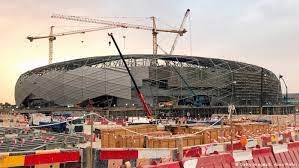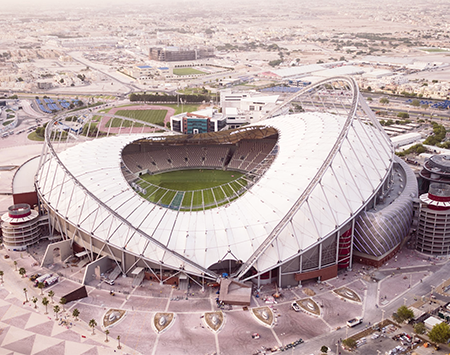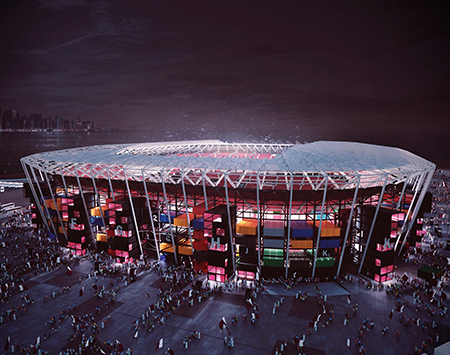Lusail Iconic Stadium to Host 2022 World Cup Qatar Final

With qualifying rounds well underway the 2022 World Cup in Qatar is already under the spotlight. Great interest is being shown around the world in the upcoming tournament – the first World Cup to be held in an Arab nation – which begins in November 2022.
Qatar has built or converted no fewer than eight stadiums and much has been made of some of the innovative designs and construction methods. The Lusail Iconic Stadium, which will host the 2022 World Cup Final, is among the most intriguing of all.
Located some 23km from the Qatari capital, Doha, Lusail Iconic Stadium has the biggest capacity of all the stadiums with 80,000 seats. As with all the World Cup stadiums in Qatar great effort has been put into green credentials. Each of the eight stadiums will be cooled using solar energy, and all have zero carbon footprint.
In addition to the final a further nine games will be hosted at Lusail Iconic Stadium and in keeping with Qatar’s desire to promote the country as a forward-thinking nation the stadium will be reconfigured following the final to become a 20,000 stadium for general sports use, with parts being converted into shops, a community space, plus educations and health facilities.
The construction of Lusail Iconic Stadium was delayed from its planned 2020 completion, and it finally opened its doors in November 2021, one year ahead of the start of the 2022 World Cup in Qatar.
Other popular news

La Copa Mundial de Clubes 2025: Un verano histórico de fútbol en los Estados Unidos

Khalifa International Stadium

The Remarkable Stadium 974 in Doha is a Unique Achievement

Al-Janoub Stadium Ready for 2022 World Cup Qatar
Reseñas
Got good price for great seats
Good service
Good service, emails can go to junk so waited 24hrs to reach out but after that the team was very good in providing feedbacks and helping out
Amazing experience
Everything went well
Everything went well. No regrets. 5/5 :) I suggest to everyone


